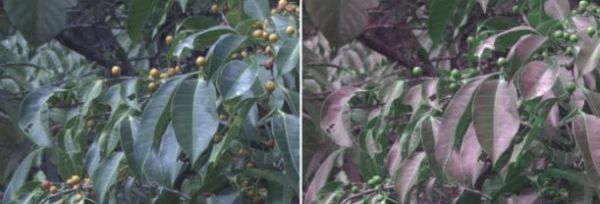The study reveals that birds see a very different reality compared to what we see.
Human colour vision is based on three primary colours: red, green and blue. The colour vision of birds is based on the same three colours - but also ultraviolet. Biologists at Lund have now shown that the fourth primary colour of birds, ultraviolet, means that they see the world in a completely different way. Among other things, birds see contrasts in dense forest foliage, whereas people only see a wall of green.
“What appears to be a green mess to humans are clearly distinguishable leaves for birds. No one knew about this until this study”, says Dan-Eric Nilsson, professor at the Department of Biology at Lund University.
For birds, the upper sides of leaves appear much lighter in ultraviolet. From below, the leaves are very dark. In this way the three-dimensional structure of dense foliage is obvious to birds. This in turn makes it easy for them to move, find food and navigate. People, on the other hand, do not perceive ultraviolet, and see the foliage in green; the primary colour where contrast is the worst.
Dan-Eric Nilsson founded the world-leading Lund Vision Group at Lund University. The study in question is a collaboration with Cynthia Tedore and was conducted during her time as a postdoc in Lund. She is now working at the University of Hamburg.
Continue reading at Lund University
Image via Lund University


